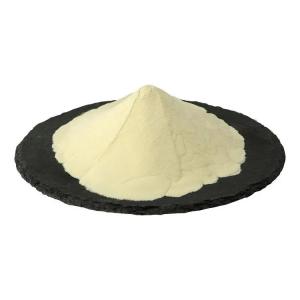Phosphatidyl serine is processed into snack coatings.
Time:2025-07-31Phosphatidylserine (PS), a naturally occurring phospholipid, is gaining recognition in the food industry for its multifunctional properties. As demand for healthier, more functional snack products grows, the inclusion of phosphatidylserine in snack coatings has emerged as an innovative solution. Known for its role in brain health and cellular function, phosphatidylserine offers unique benefits when used in snack coatings, enhancing both the sensory experience and nutritional value of snack foods. This article explores the advantages of using phosphatidylserine in snack coatings and how it is revolutionizing the snack industry.
What is Phosphatidylserine?
Phosphatidylserine is a type of phospholipid found naturally in the brain, heart, and other body tissues. It plays a crucial role in maintaining cellular integrity, particularly in the brain, where it supports cognitive functions such as memory, learning, and focus. Traditionally, phosphatidylserine has been used as a dietary supplement aimed at improving brain health, but recent trends in the food industry have led to its incorporation into functional snack products.
In snack coatings, phosphatidylserine is typically derived from soy or sunflower lecithin and used primarily as an emulsifier, stabilizing fat and water mixtures in processed foods. However, its potential extends beyond just technical functions, as it can provide consumers with health-related benefits.
Why Phosphatidylserine is Perfect for Snack Coatings
Enhancing Texture and Stability
One of the key challenges in snack production, especially for products with coatings such as chips, pretzels, and nuts, is ensuring that the coatings remain smooth, consistent, and stable over time. Phosphatidylserine, being an excellent emulsifier, helps stabilize the oil-water mixture in snack coatings, preventing the separation of ingredients and improving texture. The result is a smoother, more uniform coating that enhances the mouthfeel of the snack.
Moreover, its inclusion helps prevent the formation of unwanted moisture or oil separation, ensuring that snack coatings stay crisp and fresh for longer periods, thus extending the shelf life of the product.
Cognitive Health Benefits
As interest in functional foods continues to rise, consumers are increasingly looking for snacks that do more than just satisfy hunger—they want products that support their overall well-being. Phosphatidylserine has been linked to improved cognitive function, particularly in memory, focus, and mental clarity. By incorporating PS into snack coatings, manufacturers can create snacks that not only taste good but also promote brain health, offering a dual benefit to the consumer.
The potential for PS to support cognitive performance can appeal to health-conscious snackers who are looking for functional foods to fit into their busy, on-the-go lifestyles. This positions snacks with phosphatidylserine as both a treat and a nutritional boost.
Improved Flavor and Sensory Experience
Phosphatidylserine has a neutral flavor profile, making it an ideal ingredient for use in snack coatings. Unlike other functional ingredients that may alter the taste of the product, PS blends seamlessly into the coating, allowing the natural flavors of the snack to shine. This is essential in maintaining the delicious taste that snack lovers crave, while still delivering the added health benefits that consumers are seeking.
Whether it's a savory snack like chips or a sweet product like coated nuts, the use of PS ensures that the sensory experience remains unchanged, making it an attractive option for snack manufacturers.
Appealing to Wellness-Minded Consumers
The modern snack market is rapidly evolving, with consumers increasingly demanding products that align with their health and wellness goals. Phosphatidylserine is a perfect fit for this trend, as it is linked to improving cognitive function, reducing stress, and promoting mental clarity. By offering snacks with this functional ingredient, manufacturers can cater to consumers who prioritize both taste and wellness.
Additionally, the use of PS can help brands differentiate themselves in a competitive market. Snacks infused with phosphatidylserine can be marketed as a smart choice for consumers looking for more than just a snack—offering a combination of convenience and cognitive support.
Potential Challenges and Considerations
While the incorporation of phosphatidylserine in snack coatings offers significant benefits, there are some challenges to consider. First, the cost of phosphatidylserine can be higher compared to traditional emulsifiers like lecithin, which may impact the overall cost of production. Manufacturers will need to weigh these costs against the potential market demand for functional snack products.
Another challenge lies in the need for further research to fully substantiate the cognitive benefits of phosphatidylserine in snack products. While studies have shown positive effects on brain health, snack manufacturers must ensure that they can make claims backed by solid scientific evidence, particularly in markets with strict food labeling regulations.
Conclusion
Phosphatidylserine is quickly gaining traction as a valuable ingredient in snack coatings, offering not only functional benefits like enhanced texture and stability but also potential cognitive health advantages. As the demand for functional and healthier snacks continues to rise, PS provides manufacturers with an opportunity to create innovative products that cater to the growing consumer interest in wellness. By incorporating phosphatidylserine into snack coatings, brands can offer a unique product that combines indulgence with cognitive support—appealing to health-conscious consumers who want more from their snack foods.


 CN
CN





